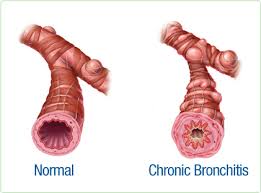Hospital Administrator’s Perspective: Meeting a Need
 The CCFAP is a proactive response to the fact that > 7 million Americans are caregivers to family members, primarily to spouses or parents who are being treated in ICUs for severe and, often, long-term illnesses. Many times, these caregivers face the strain of traveling long hours, being away from home for days or weeks at a time, catching naps on waiting room couches, and grabbing snacks from vending machines. They do this while collaborating with physicians and nurses, and making decisions that are literally about life or death for their loved one. Hospitals have felt the need, for some time, to attempt to remedy this situation and have each made individual, sporadic efforts to ameliorate it.
The CCFAP is a proactive response to the fact that > 7 million Americans are caregivers to family members, primarily to spouses or parents who are being treated in ICUs for severe and, often, long-term illnesses. Many times, these caregivers face the strain of traveling long hours, being away from home for days or weeks at a time, catching naps on waiting room couches, and grabbing snacks from vending machines. They do this while collaborating with physicians and nurses, and making decisions that are literally about life or death for their loved one. Hospitals have felt the need, for some time, to attempt to remedy this situation and have each made individual, sporadic efforts to ameliorate it.
Developing Teamwork
What should be underscored is the emphasis on teamwork and the enthusiasm that has greeted the introduction of the CCFAP. Critical care in the United States is delivered by a multidisciplinary team of professionals who work together to provide the intense monitoring and care that is needed for critically ill patients. The team is headed by a physician, and includes nurses, pharmacists, respiratory therapists, nutritionists, social workers, chaplains, and, in some cases, bioethicists. It was anticipated that the introduction of a new program would require expending significant time and energy in overcoming the resistance to change that is normally found in any setting. As the CCFAP has entered our hospitals, it has been greeted with very strong support, obviously meeting an unfulfilled need throughout the hospital. While considerable time has been devoted to planning and implementation, very little energy has been needed to overcoming any resistance. Those who initially questioned the implementation of the CCFAP were soon convinced of its value by demonstrated results.

 From the moment a patient enters one of our hospitals, that individual is entitled to our full attention and the best possible care we can provide, Our physicians, nurses, therapists, and the entire staff are focused either on delivering or supporting the health-care services required by the patient, We have always made that public commitment, and we never deviate from it, However, the Critical Care Family Assistance Program (CCFAP
From the moment a patient enters one of our hospitals, that individual is entitled to our full attention and the best possible care we can provide, Our physicians, nurses, therapists, and the entire staff are focused either on delivering or supporting the health-care services required by the patient, We have always made that public commitment, and we never deviate from it, However, the Critical Care Family Assistance Program (CCFAP  Chronic bronchitis is bronchi diffuse inflammation which is not connected with the a local or multisystem disease of lungs. Chronic bronchitis is manifested in continuous cough which lasts from two months and more. It has a tendency to worsening.
Chronic bronchitis is bronchi diffuse inflammation which is not connected with the a local or multisystem disease of lungs. Chronic bronchitis is manifested in continuous cough which lasts from two months and more. It has a tendency to worsening.